Genre: Puzzle Developer: Compile Publisher: Sega of Japan Players: 1-2 Released: 1994
Compile – the company behind such classics as Golvellius: The Valley of Doom, the Aleste series, and last but not least, Puyo Puyo. That last franchise was a huge success in Japan, but it never spawned in the west like Pokémon did. Number two is mayhap the most popular part and was released on twelve different consoles. The Mega Drive version was never released outside of Japan, but it is very easy to get if you’re into Internet shopping.
Since I don’t know Japanese, I was forced to use The Internets to find out the story. You are a girl named Arle Nadja with a friend called Carbuncle. Satan is your enemy, and he wants to steal your heart and kidnap Carbuncle. He lives in a tower with many minions guarding him. Enter the tower, defeat his minions to reach him, and then show him who is boss. Sorry, that was all I could find. Satan is known as the Dark Prince in western versions, probably because there are many morons around here who think freedom of religion only applies to their beliefs.
The main gameplay from the prequel is still here. It is still a puzzle game, similar to Columns and Dr. Mario, where you face an opponent. Puyos, creatures similar to slimes in different colours, fall down. You sort them by colour, and four of the same attached to each other make them disappear. This is called a Rensa (chain) and sends Ojyama (garbage – transparent Puyos) to your opponent. Ojyama can only be removed if they are next to Puyos that disappear in a Rensa, and the key is to make your opponent get a lot of garbage by building up your Puyos so that you get several Rensa at the same time. You can, for example, do this by having three lilac Puyos next to each other, with another one close by. The same goes for yellow, green and blue Puyos. When you get a Rensa, that fourth Puyo of each colour should fall down to the other three, causing several lines of Ojyama for your opponent. The game is over as soon as the third column is filled to the top on either your or the opponent’s side.
The simplicity of puzzle games such as Tetris or Columns makes it feel like any change just makes the game worse. But in the case of Puyo Puyo Tsu, there is so much that is better compared to the original. First of all, there are over thirty different opponents in this game, compared to twelve in the prequel. Since most of them have different strategies on how to tackle you, it helps this monotonic genre and game become more varied. You don’t have to face all of the opponents to beat the game. The first level has eight ones and a point limit that tells how many you need to beat in order to proceed to the next level. When you have beaten enough opponents and gotten enough points, you move on. As you do, more colours of the Puyos are used, the drop speed increases and the opponents become smarter.
The most essential new rule of the gameplay itself is called Sousai (garbage countering). If you are able to make a Rensa directly after your opponent has made one, the amount of garbage will be either none at all, or decrease on one side, depending on how big the Rensas were. Let’s say you get a Rensa of three groups and your opponent one of two groups. Instead of letting both have lots of garbage, only the opponent will get it and it will be equaled to one Rensa (3-2=1). This rule makes the games longer and more challenging, since it is harder to get that super Rensa you always got in the prequel.
Other new minor rules include the possibility to turn your two Puyos which are stuck between two columns when falling. There are also stronger garbage available, which forces you to clear two groups of Puyos next to them to disappear. Also, if you empty the whole screen, the next time you clear a single group your opponent will receive five lines of garbage, and it can be even more if you make a good Rensa. Lots of customization options makes this game long-living, and with a friend, it is eternal.
The graphics are very good, but they could be even better. The character design is top notch though, with a very vide cast of animals and creatures. They are very well-drawn and animated in a humourous way that lifts the game. They look different depending on how the game goes. If you are near losing they grin, and if they’re losing they sweat. Usually puzzle games are as funny to watch as mathematic calculations, but the Puyo Puyo series is a good exception of that. One thing I would like to complain about are the backgrounds during the matches. There are too few colours used, and it often feels like you are in a metallic vessel or something. It would be nicer to play in a forest or a maybe a magic fantasy land. Other than that, I can’t ask of much more, since this is a puzzle game after all.
The music is quite good. It is of the happy-sounding J-Pop kind in major scales, not very different from the prequel but better actually except for one thing: the final opponent Satan doesn’t have his own theme here. That really disappointed me, since the Satan track was really good, with its heavy sound and fast-paced tempo. There are a lot of samplings in this game, over eighty, I think. All of the opponents have one or two each, and they are very fitting to the character design and the cutesy style in general. I can’t hear what they say and they aren’t crystal clear, but who cares? “Let’s-a-go!” sounds like “Mexico!” in Super Mario 64, the best game in the world.
As in all great puzzle games, you play it so much you will see Puyos stacked up in front of your eyes when you are going to sleep. It is really that fun to play, especially if you have a friend. Two players can play against each other for hours without boredom. In single player, there are some flaws though. The difficulty feels a little unbalanced. Some opponents on level two and three feel impossible compared to those on level six who can be defeated very easily sometimes. Opponents also seem to forget that if column three is filled, they die. So you get quite a few cheap wins here and there. Other than that, it’s just a shame Puyo Puyo Tsu wasn’t released in the west. It is very cheap, easy to get and probably the best puzzler on the system, so you can’t go wrong here.
SCORE: 8 out of 10

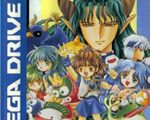
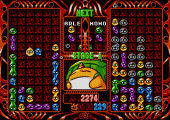
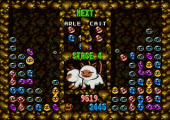
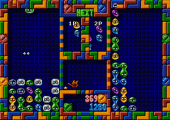
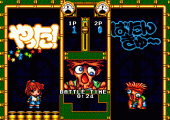
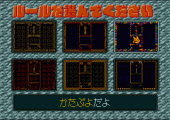
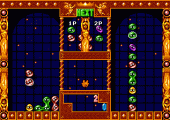
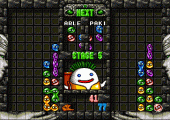
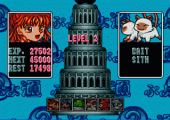
Recent Comments